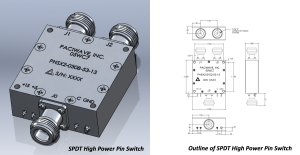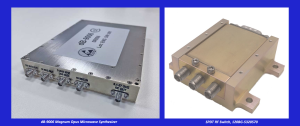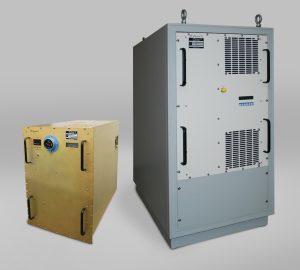by Mike Lee, Director of Sales and Marketing, dB Control
MPD: The defense market for RF and microwave components through subsystems appears to be more lucrative than in recent years, especially in the area of electronic warfare. If your company sells into the defense market, what are your thoughts about how it will perform in 2017?
ML: Defense RF and microwave subsystems for electronic warfare (EW) will be lucrative only for organizations and contractors who understand how the market is changing. Fortunately, as EW is a growing segment of dB Control’s business, we “get it.” Earlier this year, an Electronic Warfare Forecast estimated the global EW market will reach $25.36 Billion USD by 2021, and we agree. Here’s why: In EW operations, when a potential enemy radar is detected, threat emitters must be able to simulate electronic signatures and alert people to the threat. The challenge is that this simulation (and subsequently, communication and safety) can be negatively impacted in complex environments. RF and microwave subsystems must be equipped to handle harsh weather, rugged terrain, long distances, high altitudes and much more. If the electronic components fail, so does the operation. That’s why we put our products through the harshest environmental tests to ensure reliability. One of those products is a Ka-band traveling wave tube amplifier (TWTA) with color touchscreen interface. It’s an all-in-one powerhouse that doesn’t require outside controllers or cables. Products like this enable threat emitters to simulate multiple threats over a wide band even under the most adverse conditions. When integrated into a threat system, these emitters transmit with less waveguide loss and greater overall RF power. That’s the kind of innovation we bring to the table for EW applications.
MPD: The fifth generation of cellular is rapidly approaching and the immense scope of 5G seems almost certain to present significant opportunities for the RF and microwave industry. What is your perspective on this issue?
ML: The 4G cellular network has not been out long, but major carriers worldwide are already talking about the next generation 5G networks. There is no official definition of 5G, but we see opportunities to support the backhaul—and there are many who are jockeying for positions to support and even help define the 5G network so they can take advantage of the opportunity with their RF, microwave and software technology solutions. With 5G’s promise of higher speeds, low latency and higher capacity to meet requirements for more bandwidth, there will be very large opportunities for RF and microwave companies (as well as baseband hardware and software encoding companies). The 5G applications are also endless for homes, cars and the support of Internet of Things (IoT). Those who define 5G standards and make them compatible with 4G networks will have a leg up on the competition. Those who demonstrate higher speed and capacity with their proof of concepts can help dictate the 5G definition standard targeting 2018, and take advantage of opportunities in both RF/microwave hardware and software.
MPD: The Internet of Things (IoT) might better be called the Wireless Internet of Things, as without RF and microwave technology, little could be accomplished. If your company is selling into this market, please provide your perspective on IoT and its prospects for the RF and microwave industry.
ML: IoT is a familiar concept to dB Control, and one we’ve been watching for years. When you think of the communication in the modern battlefield and the massive amount of tactical data shared, it’s clear that IoT will become more prominent in the defense industry over the next decade. For example, obtaining high-resolution images and high-definition video from an unmanned aerial vehicle (UAV) requires gathering and processing large amounts of data. The electronic systems behind these processes then require a stunning amount of power and connectivity, which can be achieved using very high-power, wideband TWTAs and MPMs. But there’s a caveat—for IoT to work well in the RF and microwave industry, it needs to be very closely regulated. dB Control plans to stay at the forefront of these regulations so we can go above and beyond standard compliance.
MPD: What are the RF and microwave technologies to watch in 2017?
ML: The first technology that comes to mind are amplifiers used at millimeter frequencies for wireless communication, radar and electronic warfare. dB Control is closely watching that space. Additionally, UAVs will continue to be a must-watch technology—especially for commercial applications. While many UAVs can cruise for 30+ hours at altitudes of above 50,000 feet, it’s exciting to think of those numbers increasing as technology gets more sophisticated. We’ll continue to see many more commercial UAVs used in emergency response, natural disaster detection, scientific research and even entertainment. As the demand for UAVs increases, so will the demand for smaller, lighter products suitable for more streamlined “drones” (as civilians call them). That’s where dB Control’s proprietary high-power amplifier solutions come in. Specifically, we offer innovative vacuum or solid state devices, transformer fabrication, encapsulation and high-voltage potting techniques to support the highest power and frequencies – all with industry-leading SWaP RF/microwave and millimeter wave hardware. Without those processes, commercial UAVs won’t take off as quickly.
See original article here.






